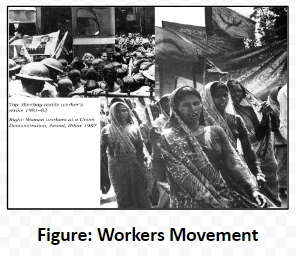![]() 12 Dec 2023
12 Dec 2023
Class-based movements, or New Social Movements, are movements which have an economic basis where a lower economic class clashes with a dominant class for their economic rights. Class-based movements have long played a pivotal role in the tapestry of social change, mobilizing individuals across economic strata to address disparities in wages, living conditions, and social security.
Rooted in the grievances of the peasants and working class, these New Social Movements have historically sought to reorganize power relations within society, advocating for a more equitable distribution of resources.
Peasant movements or agrarian struggles took place during colonial days, which raised the concerns of peasants, such as the Bengal revolt, Deccan riots, the No Tax Campaign, etc.

<div class="new-fform">
</div>